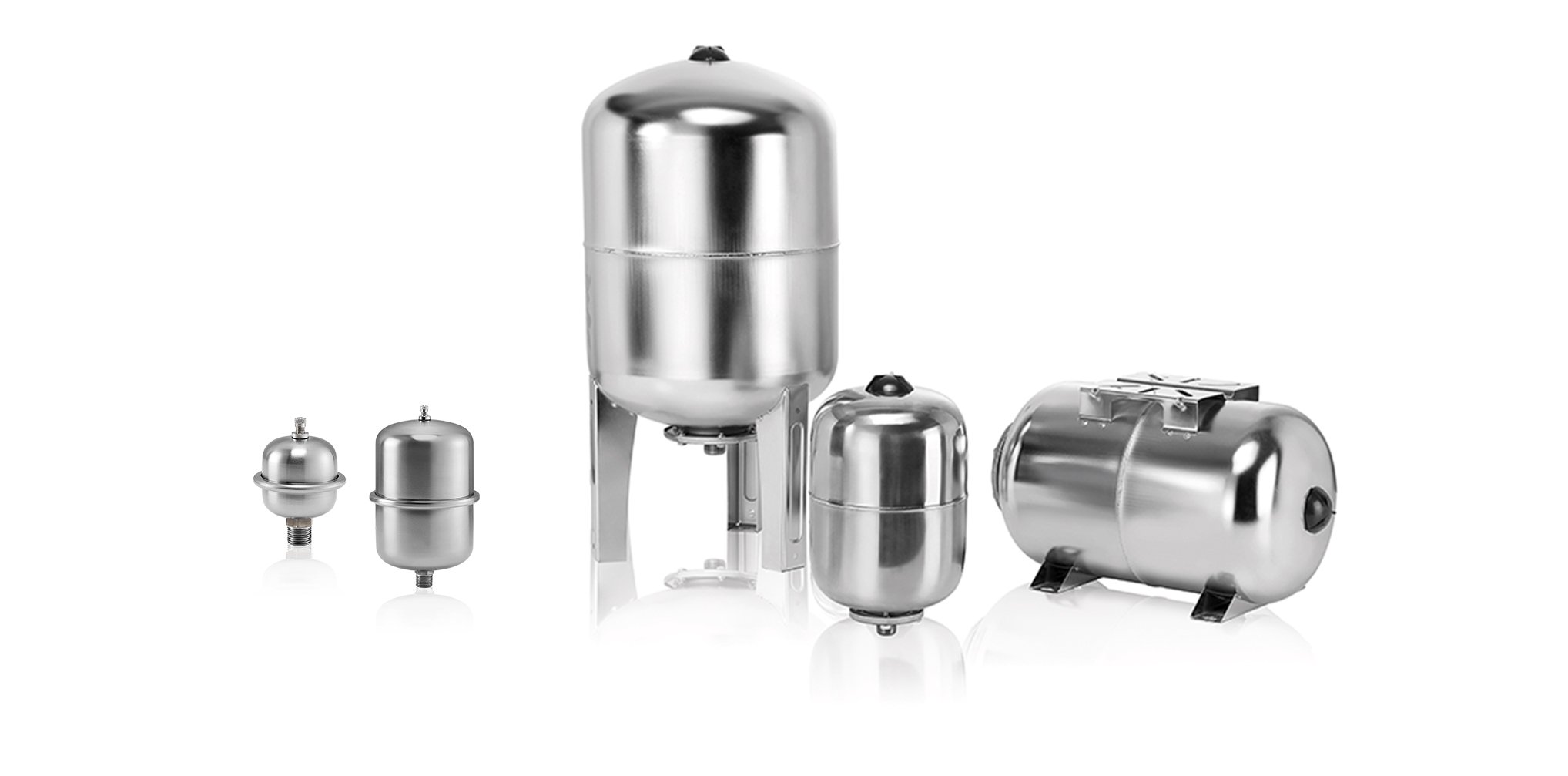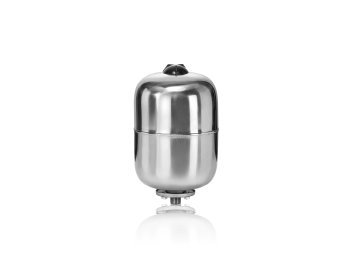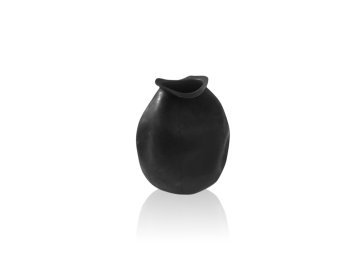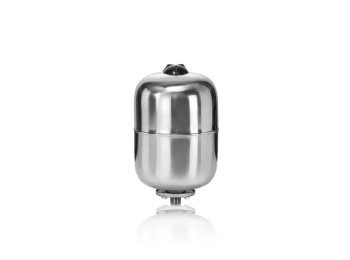Diaphragm and air supply tanks: constant pressure and hydraulic system stability.
They have the ability to maintain a constant pressure within a system by avoiding continuous restarts of hydraulic pumps and compensate for flow variations by ensuring stability in the hydraulic system.
The evolution of expansion vessels has been influenced by the growing need for more advanced fluid management solutions in various industrial and civil applications. These tanks are designed to regulate pressure within a hydraulic system, ensuring a constant and uniform flow of fluid during use.
The differences between a diaphragm tank and an air supply tank.
Diaphragm tanks and air supply tank are two types of tanks used in hydraulic systems, but they have slightly different functions and characteristics.
- Diaphragm tank: as the name suggests, uses an elastic membrane or internal bladder to separate the contained fluid from air or a compressed gas. The membrane extends or compresses in response to changes in the pressure or volume of the fluid inside the tank, allowing pressure to be regulated and maintaining an even distribution of the fluid in the system. These reservoirs are often used to store pressurised fluids in hydraulic systems, allowing for more stable and controlled pressure regulation.
- Air Supply tank: this is designed to maintain fluid pressure within the hydraulic system by compressing the air inside the tank. In this case, unlike diaphragm tanks, the air is in contact with the fluid in the system. Unlike diaphragm tanks, in air-fed tanks the pressurised air is absorbed by the water more quickly and therefore requires connection to an automatic air feeder or compressor that takes the air from the external environment and introduces it into the tank to keep it at pressure.

The importance of materials used in the construction of diaphragm and air-fed tanks.
The materials used in the construction of expansion vessels, diaphragm tanks and air supply tanks, play a key role in their effectiveness and durability. Among the most durable materials used, AISI 304 and AISI 316 stainless steel stand out for their excellent mechanical and corrosion-resistant properties. These two types of stainless steel are widely used in the plumbing industry for the production of high-quality products.
AISI 304 stainless steel is known for its good corrosion resistance in normal environments and offers excellent durability. However, in more aggressive environments or those subject to acid or chloride corrosion, AISI 316 stainless steel is a better choice due to its greater resistance to corrosion and oxide formation. These characteristics make it particularly suitable for applications where corrosion resistance is essential, such as industrial plants and water treatment systems.
Main applications of diaphragm and air supply tanks.
In general, both membrane and air supply tanks are essential in a wide range of industrial, commercial and domestic applications, contributing to the stability, efficiency and safety of the hydraulic systems in which they are used.Diaphragm and air supply tanks are used in various types of hydraulic systems (heating systems, industrial cooling systems, water distribution systems, water treatment systems, irrigation systems, etc.). The choice between one type of tank and another depends on various factors such as:
- Accuracy and sensitivity: if the system requires an extremely stable and precisely controlled pressure, it may be preferable to use a hydraulic diaphragm tank, which can provide a more uniform and controlled pressure than an air-fed tank.
- Power and peak loads: if the system requires more power or must handle high peak loads, an air-fed hydraulic tank may be more suitable as it can store energy in the form of compressed air and release it quickly when needed.
- Available space: the availability of space in the plant can influence the choice between the two types of tanks. Hydraulic diaphragm tanks tend to be more compact and require less space than air supply tanks, which can be bulkier due to the need for an additional air compressor.
- Operating and maintenance costs: if maintenance costs and energy efficiency are critical factors, it may be preferable to use a membrane tank that requires less maintenance and does not need an air compressor.
- Specific choice: choice also depends on the specific needs of the application. Some systems may benefit more from one type of tank than others, depending on the system's operating characteristics and performance objectives.
For more information and further details on Water Fitters diaphragm and air supply tanks and what they offer, please refer to the individual product data sheets. Thank you for your attention.
Insert your text here
























